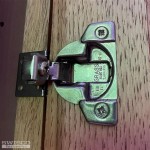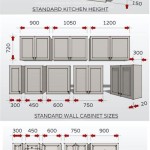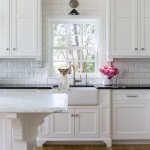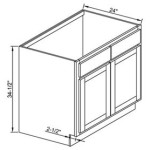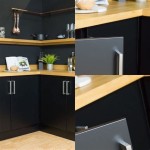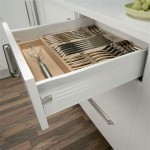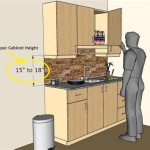Shallow Depth Kitchen Base Cabinets: Optimizing Space and Functionality
Kitchen design often presents a challenge: maximizing functionality within limited space. Traditional base cabinets, typically 24 inches deep, can sometimes be inefficient, especially in smaller kitchens, galley layouts, or areas where a wider walkway is desired. Shallow depth kitchen base cabinets offer a solution by providing adequate storage without sacrificing valuable floor space. These cabinets, generally ranging from 12 to 18 inches in depth, can significantly enhance kitchen ergonomics and improve overall workflow.
The selection of shallow depth base cabinets involves careful consideration of various factors, including the intended use, the overall kitchen design aesthetic, and the specific storage needs of the homeowner. This article will delve into the advantages and disadvantages of these cabinets, explore their diverse applications, and provide insights into selecting the right options for a successful kitchen renovation or construction project.
Enhanced Space Utilization and Accessibility
The primary benefit of shallow depth base cabinets lies in their ability to optimize space. In a narrow kitchen or galley kitchen, every inch matters. Replacing standard 24-inch deep cabinets with 12- to 18-inch deep versions can create a more comfortable and navigable walkway. This increased space not only improves movement within the kitchen but also enhances accessibility for individuals with mobility issues.
Furthermore, shallow depth allows for improved visibility and access to stored items. With a reduced depth, items are less likely to be buried at the back of the cabinet, making it easier to locate and retrieve cookware, pantry staples, or small appliances. This improved accessibility can reduce food waste and streamline meal preparation.
Consider the scenario of a kitchen island or peninsula. Using shallow depth cabinets on the back side of the island can provide valuable storage without obstructing the flow of traffic around the island. This is particularly useful for storing items that are frequently used but don’t need to be readily accessible from the primary work area of the kitchen.
From a design perspective, shallow depth cabinets can contribute to a cleaner, more streamlined aesthetic. By reducing the visual bulk of the base cabinets, the kitchen can appear more spacious and open, especially when paired with lighter color palettes and minimalist design elements. This is further enhanced when the upper cabinets also align to the shallower depth, producing a cohesive and aesthetically pleasing result.
Versatile Applications and Design Considerations
Shallow depth base cabinets are not limited to small kitchens. They have applications in various kitchen designs, including larger spaces where specific areas require a more streamlined profile. For instance, a shallow depth cabinet can be used to create a built-in coffee bar or beverage station, providing storage for mugs, coffee beans, and other related items without encroaching excessively on the countertop space.
They are also useful in creating specialized storage solutions. A shallow depth base cabinet can be fitted with pull-out shelves for storing spices, cleaning supplies, or baking ingredients. This maximizes vertical space and keeps small items organized and easily accessible. Alternatively, shallow depth cabinets can be integrated into a banquette seating area, providing hidden storage for cushions, blankets, or other items.
When incorporating shallow depth cabinets into a kitchen design, several factors must be considered. The first is the counter depth. Standard countertops are typically 25.5 inches deep, which leaves a significant overhang when paired with shallow depth cabinets. This overhang can be addressed in several ways. The countertop can be custom-fabricated to match the depth of the cabinets, or a decorative panel can be added to the back of the cabinets to fill the gap. Another option is to utilize the overhang as a breakfast bar or seating area, adding functionality and visual interest to the kitchen.
The placement of appliances should also be considered. While shallow depth cabinets can be used to house certain appliances, such as dishwashers or beverage refrigerators, they may not be suitable for larger appliances that require more depth. It is crucial to review the specifications of all appliances before selecting cabinet depths to ensure a proper fit. The functionality of the kitchen is highly dependent on the proper sizing and placement of appliances.
Another important factor is the hardware selection. Since shallow depth cabinets have less interior space, it is essential to choose hardware that maximizes storage efficiency. Pull-out shelves, drawer dividers, and vertical storage solutions can help to keep items organized and prevent them from getting lost or damaged.
Material Selection and Structural Integrity
The materials used to construct shallow depth base cabinets are essentially the same as those used for standard depth cabinets. Plywood, particleboard, and medium-density fiberboard (MDF) are common choices, each with its own advantages and disadvantages. Plywood is known for its strength and durability, while particleboard is a more affordable option. MDF offers a smooth surface that is ideal for painting or laminating.
Regardless of the material chosen, it is imperative to ensure that the cabinets are structurally sound. Shallow depth cabinets may be more prone to tipping or wobbling, especially if they are improperly installed or overloaded. To prevent this, the cabinets should be securely fastened to the wall and floor. Corner braces and other reinforcement hardware can also be used to enhance stability.
The finish of the cabinets is another important consideration. Painted cabinets are a popular choice for kitchens, as they offer a wide range of color options. Stained cabinets can add warmth and character to the space, while laminate cabinets are a durable and low-maintenance option. The finish should be chosen to complement the overall design aesthetic of the kitchen and to withstand the rigors of daily use.
The selection of drawer slides and hinges is also crucial for ensuring the longevity and functionality of the cabinets. High-quality drawer slides should be able to support the weight of the drawer contents and provide smooth, quiet operation. Soft-close hinges can prevent doors from slamming and protect the cabinet frames from damage.
Custom cabinet makers are often the source for shallow depth options, as it is not always a standard option in mass-produced cabinetry. This allows for exact dimensioning to the specific space, maximizing the usage and optimizing the aesthetic. The investment in custom work can be offset by the advantages gained in design and functionality.
Ultimately, the choice of materials and construction methods will depend on the budget, the desired aesthetic, and the expected level of use. By carefully considering these factors, homeowners can ensure that their shallow depth base cabinets are both functional and durable.
The cost of shallow depth base cabinets can vary depending on the materials used, the construction methods, and the level of customization. Stock cabinets are generally the most affordable option, while custom cabinets can be significantly more expensive. However, custom cabinets offer the advantage of being tailored to the specific needs and preferences of the homeowner.
Installation costs can also vary depending on the complexity of the project. Installing shallow depth base cabinets is generally similar to installing standard depth cabinets, but additional work may be required to address countertop overhangs or appliance placement issues. It is advisable to obtain quotes from multiple contractors before hiring someone to install the cabinets. Experienced installers will be able to identify potential problems and provide solutions, ensuring a smooth and successful installation.
Shallow depth kitchen base cabinets represent a valuable tool for kitchen design, offering a blend of space optimization, accessibility improvements, and design versatility. By carefully considering the specific needs of the space and the aesthetic preferences of the homeowner, these cabinets can be seamlessly integrated into a variety of kitchen layouts, enhancing both the functionality and the visual appeal of the room.

Reduced Depth Slimline Base Units Kitchen Diy Kitchens

Image Result For Shallow Depth Kitchen Base Cabinets Pictures Cabinet Sizes

Make Your Holiday Parties Shine With S Shallow Base Cabinets

How To Get The Perfcect Shallow Cabinet For Your Home

33 Long Narrow Kitchen Layout Suggestions Upper Cabinets Remodel Small

Reduced Depth Kitchen Cabinets New Renovation Buffet Cabinet

J Collection Light Gray Shaker Assembled Shallow Base Kitchen Cabinet With 3 Inner Drawers 24 In W X 34 5 H 14 D Dsb2414 2fhi3 Cl The Home Depot

Narrowest Kitchen Base Cabinet In 2024 Wall Cabinets Narrow

How To Cut Down The Depth Of A Base Cabinet In Stock Like Custom

Shallow Depth Cabinets Kitchen Remodel Design Small Narrow
Related Posts

